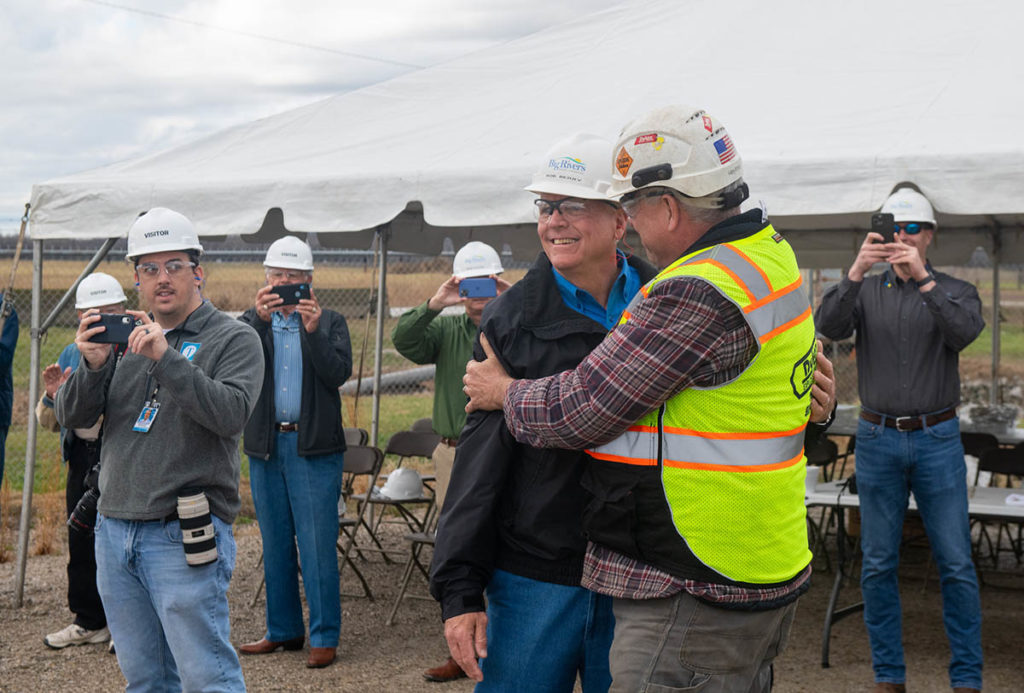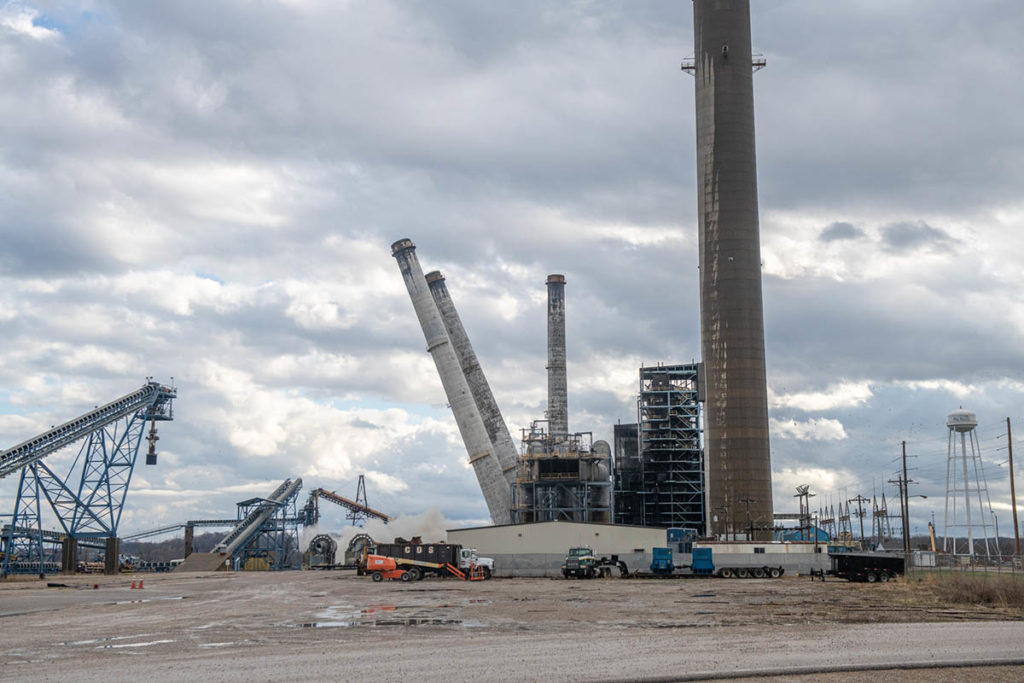A series of thunderous explosions over the central Ohio River Valley signaled a new beginning for a long-dormant coal-fired power plant owned by a Kentucky generation and transmission cooperative as it works to revive a prime industrial site for redevelopment.
Contractors hired by Henderson-based Big Rivers Electric Corp. brought down a trio of 300-foot-tall exhaust stacks and one 450-foot-tall stack as part of the ongoing reclamation of its Kenneth C. Coleman Station in Hawesville. The series of controlled blasts occurred over 90 seconds.
In remarks ahead of the March 23 detonations, Big Rivers CEO Bob Berry spoke about the G&T’s plans to redevelop the site. “It’s already got water, electricity, sewer, rail access and [navigable] water access, so it’s going to be just a great economic development site.”

The 443-megawatt power plant was taken out of production in 2014 when two aluminum smelters in the area terminated power purchase contracts with Big Rivers. Since then, many components in the plant have been dismantled for use at other facilities, and salvageable equipment and furnishings have been removed from plant buildings.
“These plants have meant good jobs for a lot of people and provided low-cost reliable energy for all the industry and homes,” said Berry, who began his co-op career as a custodian at Coleman Station in 1981.
“It has a little bit of sentimental value to me personally, and that’s kind of what makes it so bittersweet,” Berry said. “The sweet part is, we now have an opportunity to bring another industry in here that will provide jobs for the community.”
Big Rivers has been pursuing diversification of its generation portfolio for more than a decade. It now is producing electricity from coal, natural gas, solar and hydropower and has projects under development on behalf of its member distribution co-ops.

The Coleman plant’s first unit was commissioned in 1969. Two other units were activated by late 1971, and under normal operating conditions, the plants used about 1.7 million tons of Kentucky coal each year. About 150 workers were employed full time at the site.
Long-term contracts for its power were terminated when the aluminum smelters started buying wholesale power produced with relatively inexpensive natural gas. The plant was removed from the Midcontinent Independent System Operator’s rolls in 2017.
Since then, the G&T has been working with local and state economic development agencies to market the 762-acre site for redevelopment. Besides good highway access and the full range of industrial grade utilities, it also includes warehouse space, barge unloading facilities and mooring cells, supporting Ohio River barge traffic.
Demolition of boilers at the site is expected to be completed later this year. Prior use makes it eligible for brownfield designation, which could provide incentives to help defray site reclamation costs. Big Rivers is continuing with clearance, grading and environmental remediation work at the site.
Derrill Holly is a staff writer for NRECA.